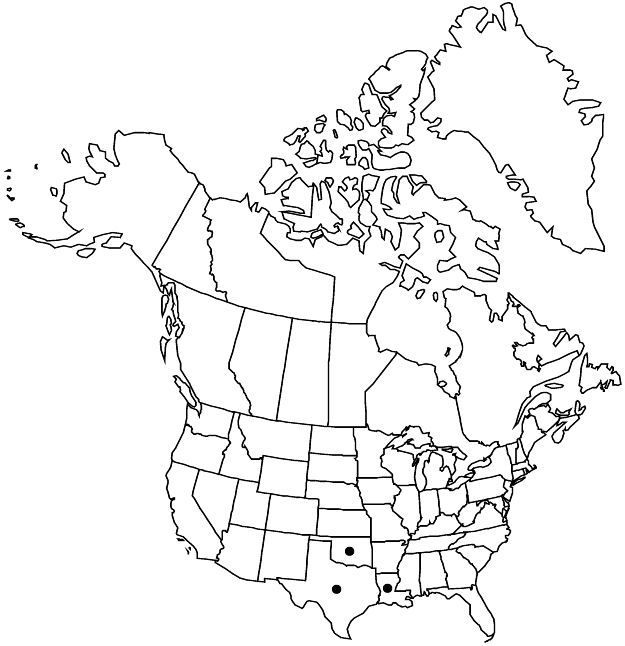Linum imbricatum
Field & Lab. 25: 32. 1957.
Herbs, annual, 3–30 cm, glabrous proximally, conspicuously short hirsute distally with stout-based hairs. Stems spreading to ascending or erect, branched from base. Leaves: proximalmost opposite, middle and distal alternate, closely imbricate, proximal leaves spreading-ascending, distal strongly appressed; stipular glands absent; blade linear-lanceolate, 5–9 × 0.5–1.2 mm, margins entire, distal leaves sparsely ciliate, apex short-awned; midrib cartilaginous. Inflorescences panicles; bracts ciliate. Pedicels 2–11 mm. Flowers: sepals persistent, ovate, 4.2–6.1 mm, margins broad, purplish, scarious, prominently toothed distally, not glandular-toothed, apex conspicuously awn-shaped; petals yellow, with or without dark red base, obovate, 6.5–8 mm; stamens 5 mm; anthers 0.6–1.2 mm; staminodia absent; styles connate to within 0.3–0.8 mm of apex, 2–4.3 mm; stigmas capitate. Capsules broadly ovoid, 2.6–3 × 2.9–3.3 mm, apex rounded, dehiscing into 5, 2-seeded segments, segments persistent on plant, false septa hyaline, with cartilaginous portion conspicuously broader near base, proximal margin appressed-pilose, otherwise glabrous. Seeds 2–2.6 × 1.1–1.5 mm. 2n = 30.
Phenology: Flowering Apr–May.
Habitat: Sandy or rocky open ground.
Elevation: 0–400 m.
Distribution

La., Okla., Tex.
Discussion
Linum imbricatum stamens have red filaments and yellow pollen and anthers, a very showy combination against the broadly bowl-shaped, butter yellow corollas often with a broad, wine red base. The stems are terete proximally and strongly ribbed distally; the sepals persist even in fruit. Linum imbricatum occurs in southern Oklahoma, is scattered in Texas, and is known from one report from Acadia Parish, Louisiana.
Selected References
None.
Lower Taxa
"broader" is not a number."wider" is not a number.